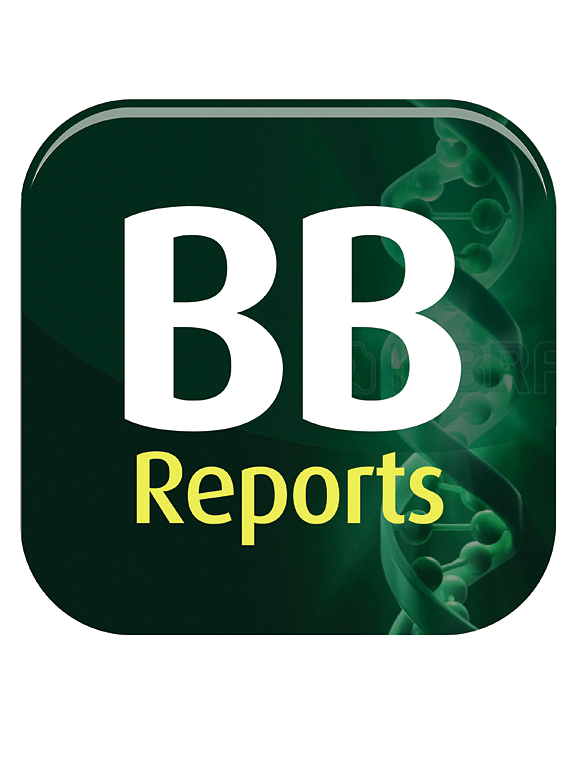一种增强赖基羟化酶2活性和基质矿化的新型小分子
IF 2.3
Q3 BIOCHEMISTRY & MOLECULAR BIOLOGY
引用次数: 0
摘要
赖氨酸羟化酶2 (LH2)由前胶原赖氨酸2-氧戊二酸5-双加氧酶2 (Plod2)基因编码,可催化原纤维胶原端肽赖氨酸残基的羟基化。这种翻译后修饰对于形成稳定的羟基赖氨酸-醛源性胶原交联至关重要,而交联在胶原稳定性、机械强度和骨形成中起着关键作用。LH2活性缺陷与包括Bruck综合征在内的骨疾病有关,然而,控制LH2活性的有效药物至今尚未开发出来。在这项研究中,我们利用硅对接模拟,发现了一个特异性结合LH2的小分子(KS122-0485428),并利用小鼠成骨细胞系MC3T3-E1评估了该化合物对胶原交联、细胞增殖和矿化的影响。KS122-0485428不影响细胞增殖和LH2表达,但显著加速矿化。羟基赖氨酸-醛源性胶原交联也显著增加,而赖氨酸-醛源性交联减少。结果表明,KS122-0485428增强了LH2活性,加速了矿化。因此,这种新型LH2激活剂具有作为骨修复和再生治疗剂的潜力。本文章由计算机程序翻译,如有差异,请以英文原文为准。
A novel small molecule that enhances lysyl hydroxylase 2 activity and matrix mineralization
Lysyl hydroxylase 2 (LH2), encoded by the procollagen lysine 2-oxoglutarate 5-dioxygenase 2 (Plod2) gene, catalyzes the hydroxylation of lysine residues in the fibrillar collagen telopeptides. This post-translational modification is essential for forming the stable hydroxylysine-aldehyde derived collagen cross-links that play a critical role in collagen stability, mechanical strength, and bone formation. Defective LH2 activities have been implicated in bone disorders including Bruck syndrome, however, effective agents that control LH2 activity have not been developed until now. In this study, using in silico docking simulations, we identified a small molecule (KS122-0485428) that specifically binds LH2, and assessed the effects of this compound on collagen cross-linking, cell proliferation, and mineralization using the murine osteoblastic cell line MC3T3-E1. While KS122-0485428 did not affect cell proliferation and LH2 expression, it significantly accelerated mineralization. The hydroxylysine-aldehyde derived collagen cross-links were also significantly increased at the expense of the lysine-aldehyde derived cross-link. These results demonstrate that KS122-0485428 enhances LH2 activity leading to accelerated mineralization. Thus, this novel LH2 activator has the potential as a therapeutic agent for bone repair and regeneration.
求助全文
通过发布文献求助,成功后即可免费获取论文全文。
去求助
来源期刊

Biochemistry and Biophysics Reports
Biochemistry, Genetics and Molecular Biology-Biophysics
CiteScore
4.60
自引率
0.00%
发文量
191
审稿时长
59 days
期刊介绍:
Open access, online only, peer-reviewed international journal in the Life Sciences, established in 2014 Biochemistry and Biophysics Reports (BB Reports) publishes original research in all aspects of Biochemistry, Biophysics and related areas like Molecular and Cell Biology. BB Reports welcomes solid though more preliminary, descriptive and small scale results if they have the potential to stimulate and/or contribute to future research, leading to new insights or hypothesis. Primary criteria for acceptance is that the work is original, scientifically and technically sound and provides valuable knowledge to life sciences research. We strongly believe all results deserve to be published and documented for the advancement of science. BB Reports specifically appreciates receiving reports on: Negative results, Replication studies, Reanalysis of previous datasets.
 求助内容:
求助内容: 应助结果提醒方式:
应助结果提醒方式:


